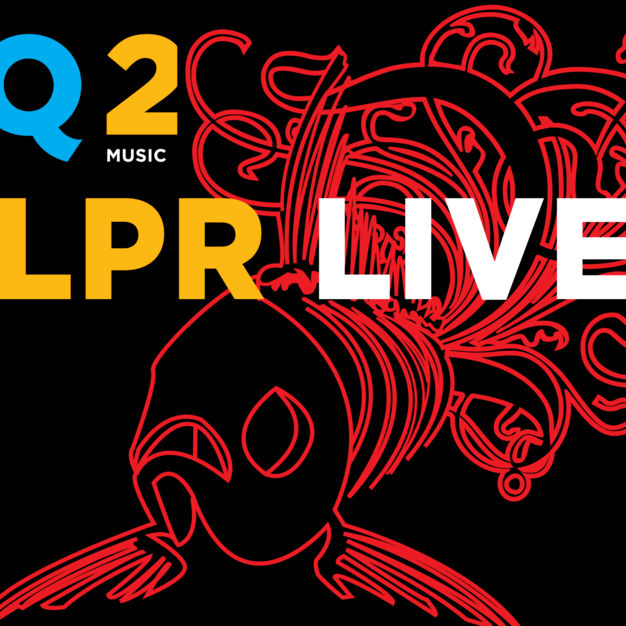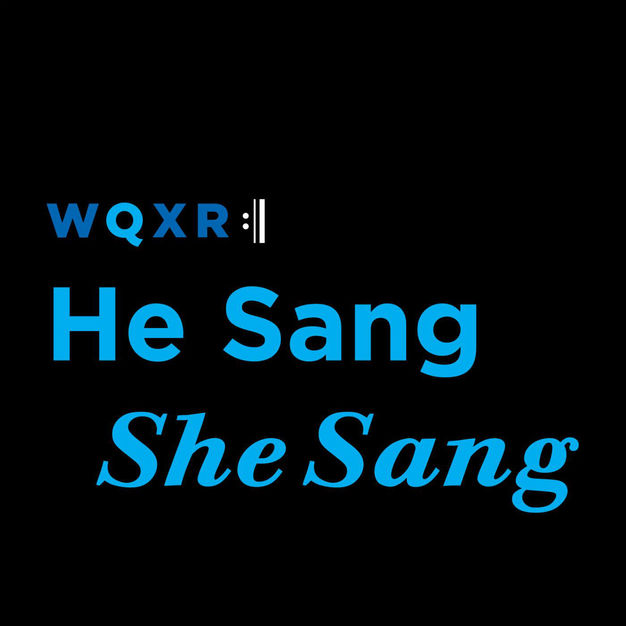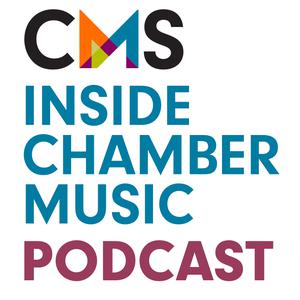
Café Concerts
WQXR Radio
Watch videos of preeminent classical artists recorded live in the WQXR café.
- 23 minutes 27 secondsIn-Studio: Alina Ibragimova Performs Bach and Ysaÿe
The Russian-born violinist Alina Ibragimova in recent years has developed a following in Europe, especially in the U.K., where she studied and came of age. She appears poised to have a bigger following in New York, too, after her recent performances at the Mostly Mozart Festival and in the studio at WQXR. She came to the WQXR performance studio to present two pieces, starting with Eugène Ysaÿe's Sonata No. 3. Watch the video below and listen to the full segment at the top of this page.
This past June, Ibragimova, 29, released a recording of Ysaÿe's six violin sonatas, known as some of the most treacherous solo works in the repertoire. They are portraits, of a sort, of six violinists whom the composer knew in the 1920s: Joseph Szigeti, Jacques Thibaud, Georges Enescu, Fritz Kreisler, Mathieu Crickboom and Manual Quiroga. "You hear the personalities," said Ibragimova. "They feel like proper little dedications."
Ibragimova arrived at the station early one August morning after having performed a late-night (10 pm) recital at Lincoln Center's Kaplan Penthouse—one of at least two such performances this summer, another being at London's Royal Albert Hall in July. The violinist believes the late shift helps put audiences in a more contemplative mindset for listening. "I think the atmosphere changes for the time of day," she said. "People listen differently."
For her second performance, Ibragimova offered the Largo from J.S. Bach's Solo Violin Sonata No. 3.
Ibragimova's still-young career is notable for the sheer breadth of her repertoire interests. She has also formed an all-female string quartet called Chiaroscuro that uses period instruments, though she herself opts for an unorthodox approach to equipment, changing strings, pitch and bows on her (comparably modern) 1780 Anselmo Bellosio violin. "Whilst it works, I find it's not ideal," she said. "Now I'm going to try a different violin to use with the quartet just so I don't have to put my violin through this all the time."
When she isn't touring, Ibragimova lives in Greenwich, England with her husband, the Guardian music critic Tom Service. The couple married in the spring, having first met when he interviewed her. She says it isn't difficult having a critic around who is constantly evaluating music. And there are perks: "There are so many books now at home. It's great. He knows all the opus numbers."
Video: Kim Nowacki; Audio: Irene Trudel; Interview: Jeff Spurgeon; Text & Production: Brian Wise
17 August 2015, 4:00 am - 30 minutes 17 secondsIn-Studio: Matt Haimovitz & Christopher O'Riley Play Beethoven & Rachmaninoff
The cellist Matt Haimovitz and pianist Christopher O'Riley are quick to emphasize that their recent venture into Baroque period instruments isn't some fusty or antiquated pursuit. The duo's new album, "Beethoven, Period," was recorded at Skywalker Ranch, film director George Lucas's famous studio complex in Northern California. Instead of sheet music they played from iPads. Their Seattle launch concert took place at the Tractor Tavern, a rock club.
The experience with very old instruments also forced them to rethink their approach to Beethoven's music. "All of the sudden, the relation between the cello and the piano is completely different," Haimovitz tells host Elliott Forrest. "No longer am I trying to project over the grandeur of a Steinway grand but I'm actually having to make room for the piano."
"You have a lot more leeway in terms of expressivity and color, even in the sense of one note having a shape to it," added O'Riley.
The album features Beethoven's complete works for cello and keyboard, with O'Riley playing on a fortepiano made in 1823 and Haimovitz outfitting his 1710 Goffriller cello with ox-gut strings, a rosewood tailpiece and a period bow.
The duo's performance in the WQXR studio marked a return to (mostly) modern equipment – with a 1940's Steinway and a modern cello bow – but two movements from the Opus 102 No. 2 sonata had a lightness and transparency that suggested time diligently spent in the period-instrument camp.
As Haimovitz notes, the Opus 102 sonatas "offer a window into Beethoven's late period where he's deconstructing all of the ideas of the enlightenment and what he inherited from Haydn and Mozart and really finding his own voice complete." Below is the third movement.
O'Riley and Haimovitz have previously collaborated on "Shuffle. Play. Listen" (2012), an album of pieces by classical composers (Stravinsky, Janacek, Martinu) along pop acts (Radiohead, Cocteau Twins, Arcade Fire), among others. Both artists have sought to blur the lines between pop and classical over the past decade or more – since Haimovitz began playing Bach in bars and clubs in 2002 and O'Riley started arranging arty rock songs around the same time.
Together the duo is planning a future project of pop songs given classical reworkings by contemporary composers. According to O'Riley, it will include John Corigliano's resettings of Bob Dylan and Joni Mitchell songs; Philip Glass arranging the Velvet Underground; and Gunther Schuller taking on the band Guided by Voices. A recording is expected to be out this fall.
Haimovitz and O'Riley also don't shy away from lush, romantic works as well, as their final performance in the WQXR studio demonstrates: the Andante from Rachmaninoff's Cello Sonata, Op. 19. Watch that below and listen to the full segment at the top of this page.
Video: Kim Nowacki; Sound: Irene Trudel; Text & Production: Brian Wise; Interview: Elliott Forrest
15 April 2015, 6:00 pm - 25 minutes 46 secondsThe Jake Schepps Quintet's Classical Hoedown
Blame it on Aaron Copland's Appalachian Spring or perhaps the ridiculous virtuosity that is characteristic of so much bluegrass playing. In the past decade, growing numbers of classical musicians have been mixing it up with fiddlers, banjo players and mandolin pluckers. Yo-Yo Ma has worked with bluegrass players in the Goat Rodeo Sessions; mandolin wizard Chris Thile has played his own concerto with several American orchestras and released an album of Bach partitas.
The latest group to explore this hybrid is the Jake Schepps Quintet, a string band whose members are steeped in bluegrass spontaneity but whose repertoire – yes, repertoire – is by composers from the modern classical tradition. They include Matt McBane, Marc Mellits, Gyan Riley, and Matt Flinner. Led by Schepps, a Colorado-based banjoist, the group came to WQXR to play three pieces from "Entwined," their debut album.
"Most of the instruments in the string band aren't foreign" to classical composers, said Schepps, in an interview with host Terrance McKnight. "Most classical composers have written for violin, guitar, and bass, and a mandolin is tuned like a violin so it's familiar territory."
The quintet's set began with Flatiron VII: Planetary Tuners by Mellits, a Chicago-based composer whose works have been performed by the Orpheus Chamber Orchestra and Kronos Quartet, among other groups.
Schepps has been at the forefront of melding bluegrass with other genres for several years. He previously recorded an album of Béla Bartok's music arranged for a string band, "An Evening In The Village," and says he wants to play the music of Henry Purcell for a future project. "I fell in love with his three and four-part fantasias," he said. "I love Baroque music and Bach. I'm always curious for places that I can take string band instruments into new terrain." Schepps added that it's a "lateral step" to transfer pieces from Purcell's viola da gambas to the five-string banjo.
The quintet's next selection is the album's title track, by Matt McBane, a Brooklyn violinist and composer who directs the Carlsbad Music Festival in California and whose music has been played by a number of new-music groups.
Flinner, who plays mandolin in the quintet, composed the last selection in the set, called Migrations. He tells McKnight that his challenge "was trying, as a bluegrass musician, to write across that line in a long-form manner. Classical music goes so many different directions these days. One thing that we could use more of is more American roots elements added to that. Bluegrass is a uniquely American art form. It feels like it's getting more respect."
Schepps added: "My hope is that a classical audience will come to find something interesting about bluegrass."
Listen to the full interview and performances at the top of this page.
Jake Schepps Quintet Personnel:
Jake Schepps: five-string banjoMatt Flinner: mandolinRyan Drickey: violinJordan Tice: acoustic guitarAndrew Small: double bass
Videos: Kim Nowacki; Audio: Irene Trudel; Production: Brian Wise; Interview: Terrance McKnight; Production Assistance: Rebecca Stein
25 February 2015, 5:00 am - 25 minutes 8 secondsCafé Concert: The Demenga Brothers and Luka Juhart
Successful sibling duos in music are rare. The stress of rehearsing and being constantly on the road together can derail the happiest collaboration. The best-known sibling partnership in musical history – Wolfgang Amadeus Mozart and his sister Nannerl – didn't last long. He went off to Paris, Vienna and Prague; Nannerl settled down into marriage.
The Swiss cellists Thomas and Patrick Demenga appear to take their collaboration with a more easy-going attitude. Some 35 years since graduating from Juilliard and the Bern Conservatory, respectively, they are still going strong, and performed together in December at the Chamber Music Society of Lincoln Center.
"We can go on stage and close our eyes and start without even looking at each other," Patrick Demenga told host Jeff Spurgeon. "We are so close in a way musically that we trust – it's one of the most exciting experiences that you can have on stage."
The two cellists, who also have active solo careers, came to the WQXR Café to perform as both a duo and as a trio with the Slovenian accordionist Luka Juhart. Their program combined the music of Bach with two modern works. First up was a transcription of Bach's Sonata in G minor for Gamba and Harpsichord (first movement), with Juhart playing the harpsichord part.
"Normally if you play with harpsichord and continuo," said Thomas Demenga, "you have a very thin sound and you have to be very careful as a cellist not to overpower the harpsichord. In this combination with accordion you have a really full range because he can sustain the lines so you have the full polyphony."
Juhart met the Demenga brothers through a composer friend, which led to some festival dates in Europe. At an appearance in Austria last year, David Finckel, the artistic director of the Chamber Music Society of Lincoln Center, heard the trio and booked them on his series. Although the accordion is a relative outsider in U.S. chamber music circles, Juhart estimates that there are 30 or 40 college-level training programs in Europe where one can major in the instrument (he teaches at the academy in Ljubljana, Slovenia).
Below, Juhart performs Vinko Globokar’s theatrical solo piece, Dialog über Luft.While Juhart has sought to explore the outer boundaries of the modernist accordion sound, he has also taken up Baroque works by Rameau, Handel, Scarlatti and Frescobaldi. The Demenga brothers, meanwhile, have been equally versatile, as seen in the last work on their program, an excerpt from Thomas Demenga's Solo per due, which features all manner of bowed and plucked techniques.
"It's a bit jazzy but not really because I don't like classical musicians who try to play jazz," said Thomas Demenga. He notes that one of his classmates and friends at Juilliard was the violinist Nigel Kennedy, known for a freewheeling forays into popular styles. "We played on the streets [of New York] to make money," Demenga recalls. The two musicians also played frisbee in the halls of Juilliard. "People hated us," he said with a laugh.
Video: Kim Nowacki; Audio: Chase Culpon; Production & Text: Brian Wise
6 January 2015, 4:22 pm - 19 minutes 50 secondsWatch: American Boychoir Presents Songs of the Season
The American Boychoir has had an eventful 2014 that's included an appearance in a Hollywood feature film, a visit to the Toronto Film Festival and a December East Coast tour that has the group singing Christmas music in seven different languages.
Eleven members of the choir, led by music director Fernando Malvar-Ruiz, visited the WQXR studios early this month to present a selection of carols and songs. The ensemble began with "Mary Had a Baby" and "We Wish You a Merry Christmas."
Based in Plainsboro, NJ, the American Boychoir is one of two accredited boychoir boarding schools the United States, the other being the Saint Thomas Choir School in Manhattan. The group, which marked its 75th anniversary last year, is characterized by a unique sound and facility in a wide range of styles.
Specifically, unlike the famous Vienna Boychoir, on which it was originally patterned, the American Boychoir uses so-called voices-in-transition. "That's what distinguishes us from almost any other boychoir in the world," said Malvar-Ruiz. "It's the fact that we have changing voices still singing with us. It's adding that new color that makes our sound so unique."
This allows the ensemble to fill out SATB (soprano, alto, tenor, bass) choral arrangements (and beyond), as we hear below in these performances. But as 12-year-old chorister Douglas Butler explains, the choir's sound is also the product of hard work, with a school day that stretches from 8 am to 6 pm. "We've tacked an extra three hours at the end of every day for a rehearsal," he says. "We have to learn a lot of music and a lot of times we have to do it quickly" – and by memory. Below: Bach's Domine Deus:
The American Boychoir is the centerpiece of a forthcoming film called "Boychoir." Directed by Academy Award-winning film director Francois Girard, it stars Dustin Hoffman and Kathy Bates in a feel-good tale about a troubled boy from Texas who attends the American Boychoir School. Due for national release in 2015, it garnered raves at its Sept. 6 premiere at the Toronto Film Festival.
"We did three weeks of filming and a few more weeks of recording the soundtrack," said Malvar-Ruiz. The film was shot at Connecticut’s Fairfield University and in New York, but the American Boychoir School's uniforms, logo and identity are to be used. This is just the latest Hollywood encounter for a choir whose performances have been featured in numerous films and commercials since its founding in Columbus, Ohio in 1937.
The choir has been steeped in holiday music throughout its history – at least since its first appearance in a national television broadcast of Gian Carlo Menotti’s opera, Amahl and the Night Visitors, in 1951. Among its performances this month is an appearance at the Metropolitan Museum of Art on Dec. 16. Watch their fourth WQXR performance below and listen to the full segment, with host Terrance McKnight's interview, at the top of this page.
Video: Kim Nowacki; Audio: Irene Trudel; Production & Text: Brian Wise
13 December 2014, 5:00 am - 16 minutes 10 secondsCafé Concert: Mivos Quartet
Bach's austerely beautiful Art of Fugue has long fascinated musicians who have a taste for the modern and esoteric. The piece, left incomplete at the composer's death, reduced complex counterpoint to its bare essentials – so much that the composer didn't even indicate the instrument (or instruments) for which it was composed.
25 November 2014, 11:00 pm - 12 minutes 37 secondsCafé Concert: Dublin Guitar Quartet
The four members of the Dublin Guitar Quartet do not specialize in bouncy jigs and reels. Nor do they play in Guinness-soaked pubs. But while the ensemble is certainly connected to its Irish heritage, its repertoire goes further afield, to minimalist and post-minimalist composers including Philip Glass, Arvo Part and Michael Nyman, as well as modern masters like Igor Stravinsky and György Ligeti.
21 October 2014, 8:00 pm - 31 minutes 45 secondsCafé Concert: Pablo Villegas
The classical guitarist Pablo Villegas has made his home in New York City for a decade, but his performances have a strong sense of his roots in La Rioja, a region in the north of Spain celebrated for its complex red wines as well as its earthy, indigenous folk music. That includes the Spanish Jota, a folk dance that is normally played with mandolins and guitars, singers and dancers.
10 October 2014, 5:38 pm - 28 minutes 33 secondsCafé Concert: Zuill Bailey
VIDEO: Zuill Bailey Plays Selections from Bach's Cello Suite No. 3"Playing Bach – and I don't jokingly say this – is like public therapy," said the cellist Zuill Bailey, just after finishing several movements from Bach's Cello Suites in the WQXR Café. "You're feeling unbelievable one moment and you're feeling very insecure in the next.
13 August 2014, 10:00 pm - 11 minutes 10 secondsCafé Concert: Time for Three
Within the last month, the string trio Time for Three has had the unusual distinction of being covered by the Today Show, the Los Angeles Times, CNN, The Strad and yes, WQXR. The reason? Violinists Zachary De Pue and Nicolas Kendall were told they couldn’t take their violins inside the cabin on a US Airways flight from North Carolina to Arkansas.
15 June 2014, 4:00 am - 22 minutes 14 secondsCafé Concert: Anne Akiko Meyers
Anne Akiko Meyers plays a centuries-old Guarneri del Gesu violin once used by Itzhak Perlman, Henri Vieuxtemps and Yehudi Menuhin, but it doesn’t reveal its beauty easily.
21 March 2014, 3:15 pm - More Episodes? Get the App
Your feedback is valuable to us. Should you encounter any bugs, glitches, lack of functionality or other problems, please email us on [email protected] or join Moon.FM Telegram Group where you can talk directly to the dev team who are happy to answer any queries.
 LPR Live, from New York
LPR Live, from New York
 He Sang/She Sang
He Sang/She Sang
 CMS Inside Chamber Music Podcast
CMS Inside Chamber Music Podcast
 Around Broadway
Around Broadway
 Conducting Business
Conducting Business
 My Classical Podcast
My Classical Podcast